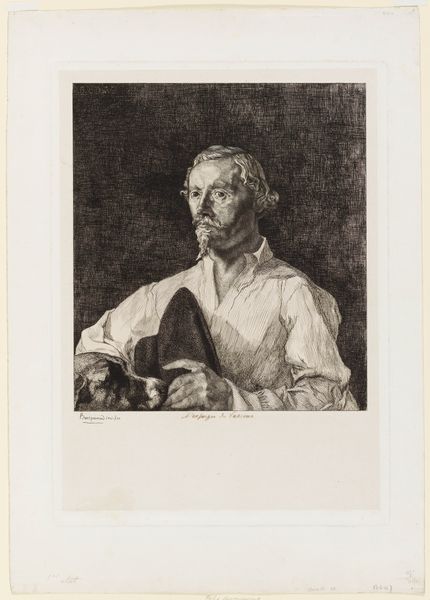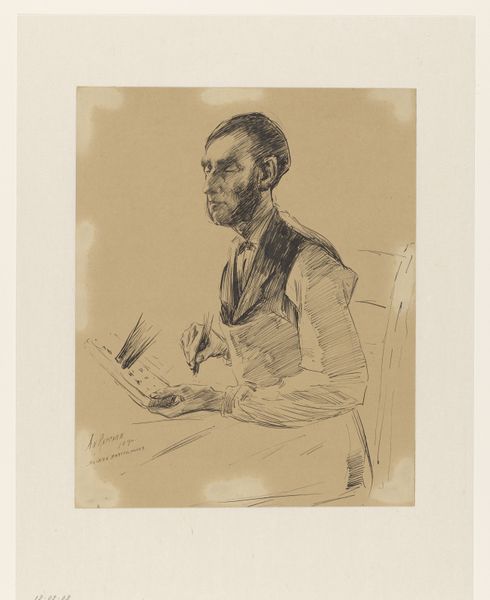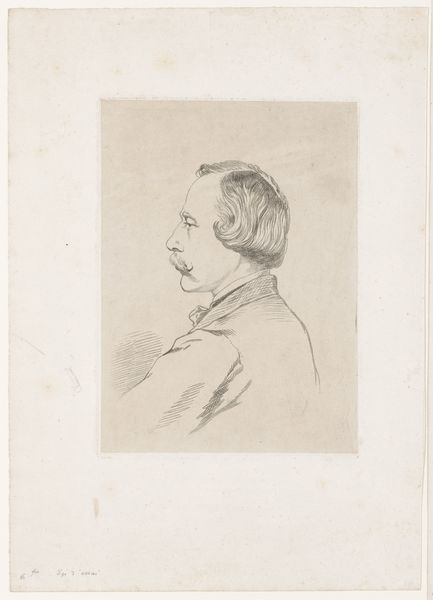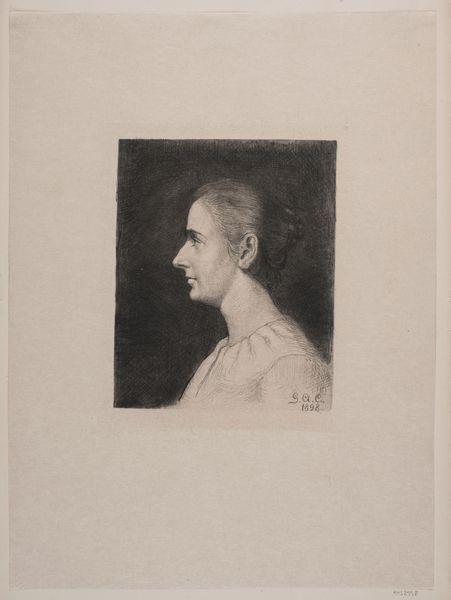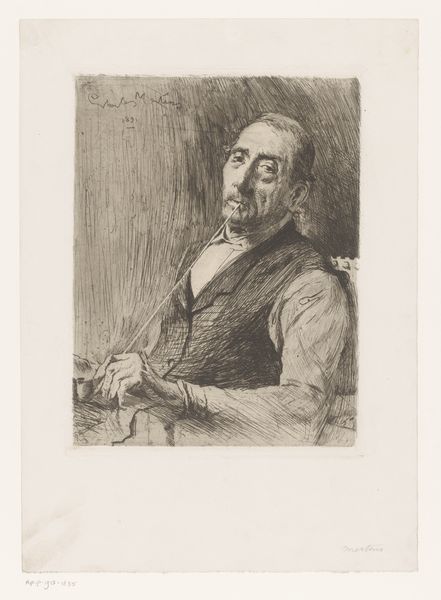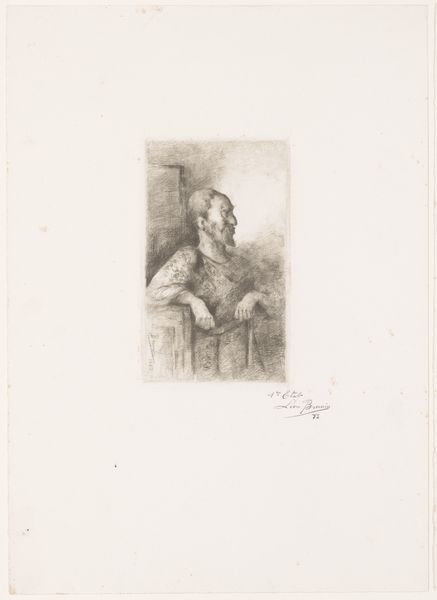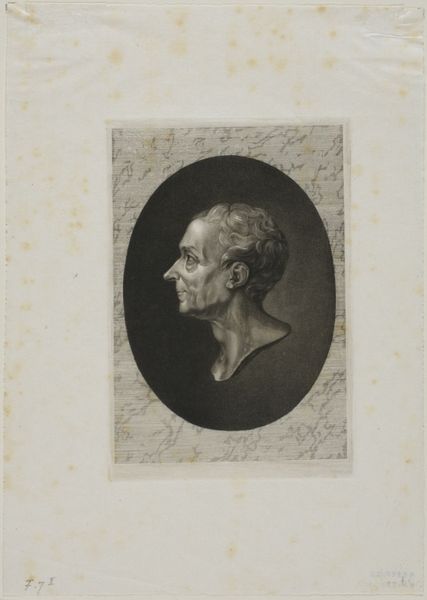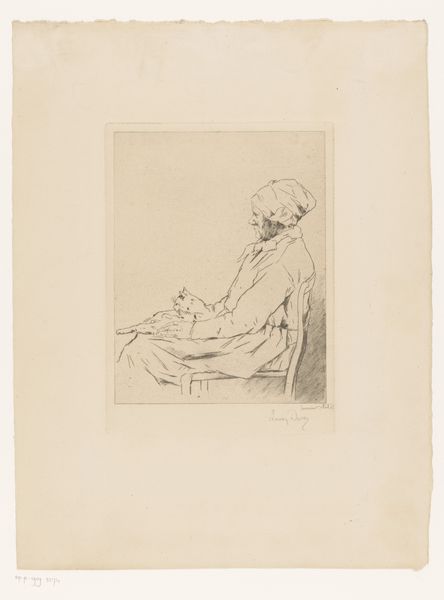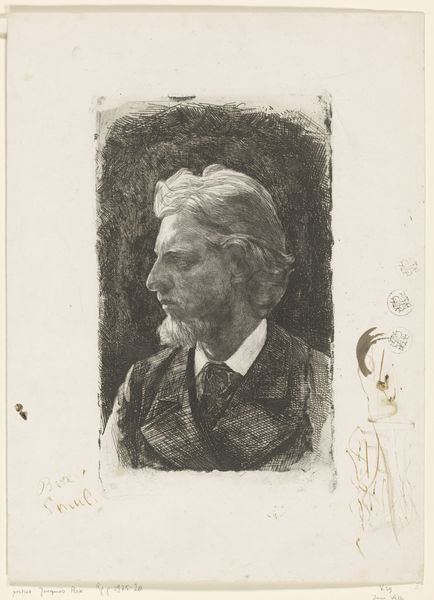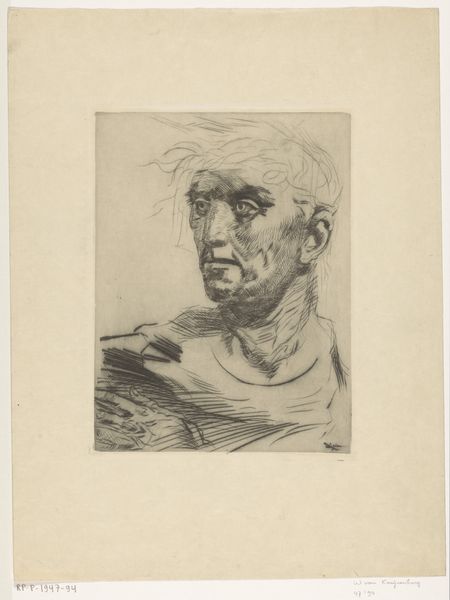
print, etching
#
portrait
# print
#
etching
#
realism
Dimensions: 9 9/16 x 8 7/8 in. (24.29 x 22.54 cm) (image)13 1/2 x 9 7/8 in. (34.29 x 25.08 cm) (plate)20 13/16 x 14 1/8 in. (52.86 x 35.88 cm) (sheet)
Copyright: Public Domain
Editor: This is Fèlix Bracquemond’s "Portrait of Desforges de Vassens", an etching from 1856. The level of detail Bracquemond achieves with etching is remarkable. It's so realistic, but there is a somber quality to the piece. What visual elements stand out to you, or what story might it be trying to tell? Curator: The averted gaze speaks volumes. It suggests a depth of character, perhaps even introspection or melancholy, common motifs within portraiture meant to elevate the sitter beyond mere status. The hat he holds adds to the narrative. It represents his role and status in society. Consider what happens to this symbolic function when it's no longer on the sitter's head. What does holding it suggest about Desforges de Vassens? Editor: It's as if he's hesitant to fully embrace that role. There is something withholding. Curator: Exactly! The way Bracquemond renders the face also offers insights. Look closely at the eyes and mouth—what emotions do you perceive, and how might they be reflections of the era's sensibilities or societal expectations? Does the rendering embody an attitude or project a certain personality? Editor: I see a hint of weariness, maybe even disillusionment. I also noticed the shirt—the unbuttoned collar feels unexpectedly casual for a formal portrait, perhaps signaling a subtle rebellion or intellectual nonconformity? Curator: That is a fantastic point! The relaxed collar, contrasted against the formality of the portrait genre itself, infuses the piece with tension. The artist might be saying something deeper about individuality versus societal roles. Remember, artists often embedded symbolic meaning to speak volumes with visual shorthands. What did you discover while looking at this etching? Editor: It’s fascinating how even in realism, so many symbolic cues contribute layers of meaning and invite us to actively decode them, changing how we read the person portrayed. Curator: Precisely. And etching, through its lines and shades, becomes a powerful tool not just for replication but also for nuanced cultural commentary.
Comments
No comments
Be the first to comment and join the conversation on the ultimate creative platform.
